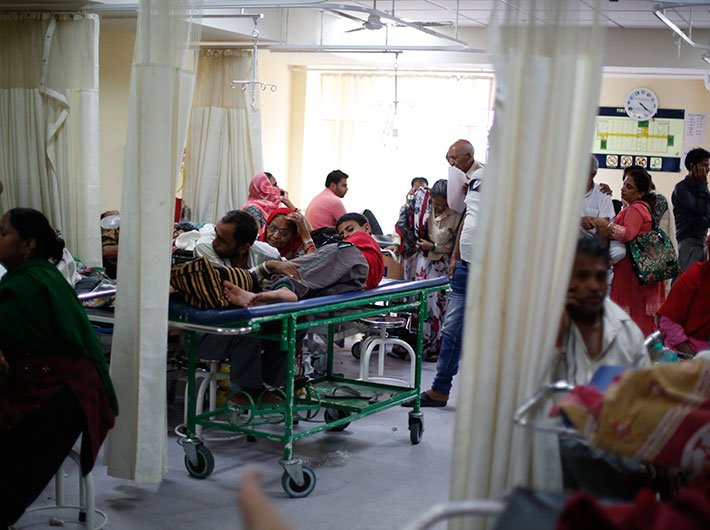The National Health Policy 2017 envisages raising public health expenditure progressively to 2.5% of the GDP by 2025
The National Health Mission, which is aimed at achieving universal access to health care by strengthening health systems, institutions and capabilities, needs to be significantly improved to become more effective.
The allocations for the health ministry has increased by 2 percent from Rs 53,294 crore in 2017-18 to Rs 54,600 crore in 2018-19. In 2018-19, the union government allocated Rs 30,130 crore to NHM, a decrease of 2 percent from the previous year, said Accountability Initiative (AI) at the Centre for Policy Research.
The fund for NHM is released by union government to state treasuries who further release it to State Health Societies (SHSs). There are significant delays in the release of funds from the treasury to SHSs. In FY 2016-17, release of funds from the treasury to SHS took around 5 months in Karnataka and Maharashtra, it said. In 2016-17, only 57 percent of total available budget was spent.
The report also noted that there are significant shortfalls in specialists in Community Health Centres (CHCs). As on March 2017, there was an 82 per cent shortfall in the number of specialists required across CHCs and 65 per cent of the sanctioned posts were vacant.
In May 2013, the union government launched the National Health Mission (NHM) which consists of two sub-missions: a) the National Rural Health Mission (NRHM) launched in 2005 to provide accessible, affordable and quality health care in rural India, and b) the National Urban Health Mission (NUHM), a sub-mission launched in 2013 for urban health, said the official NHM website.
The planning commission in a report said that a health system is the sum total of all the organizations, institutions and resources whose primary purpose is to improve health.
The 11th Plan had set six health outcome indicators as time-bound ‘goals’. These included lowering maternal and infant mortality, malnutrition among children, anaemia among women and girls, and fertility, and raising the child sex ratio. Though, there has been progress on all these fronts, except child sex ratio, the goals have not been fully met, said the report of the steering committee on health for the 12th five year plan.
Union minister Anupriya Patel informed parliament that as per National Health Accounts Estimates for India 2014-15, the per capita government health expenditure in India is estimated at Rs.1108. The National Health Policy 2017 envisages raising public health expenditure progressively to 2.5% of the GDP by 2025.
Based on the recommendation of the Group of Experts (GoE) headed by Prof. Ranjeet Roy Chaudhary and the department related Parliamentary Standing Committee of Health and Family Welfare, a draft National Medical Commission Bill was framed by a committee headed by Vice Chairman Niti Aayog which was subsequently approved by the Group of Ministers with some modification. The National Medical Commission Bill, 2017 has been introduced in the Lok Sabha on December 29, 2017.
Another planning commission report planningcommission.nic.in/aboutus/committee/wrkgrp12/health/WG_1NRHM.pdfsaid that the National Rural Health Mission (NRHM) of the Eleventh Plan was “conceptualized in response to what were perceived as systemic flaws in the health system namely, the lack of a holistic approach, absence of linkages with collateral health determinants, gross shortage of infrastructure and human resources, lack of community ownership and accountability, non-integration of vertical disease control programs, inadequate responsiveness to community needs and lack of financial resources”.
Clearly, a lot more needs to be done to make public health more accessible and affordable to the people.
